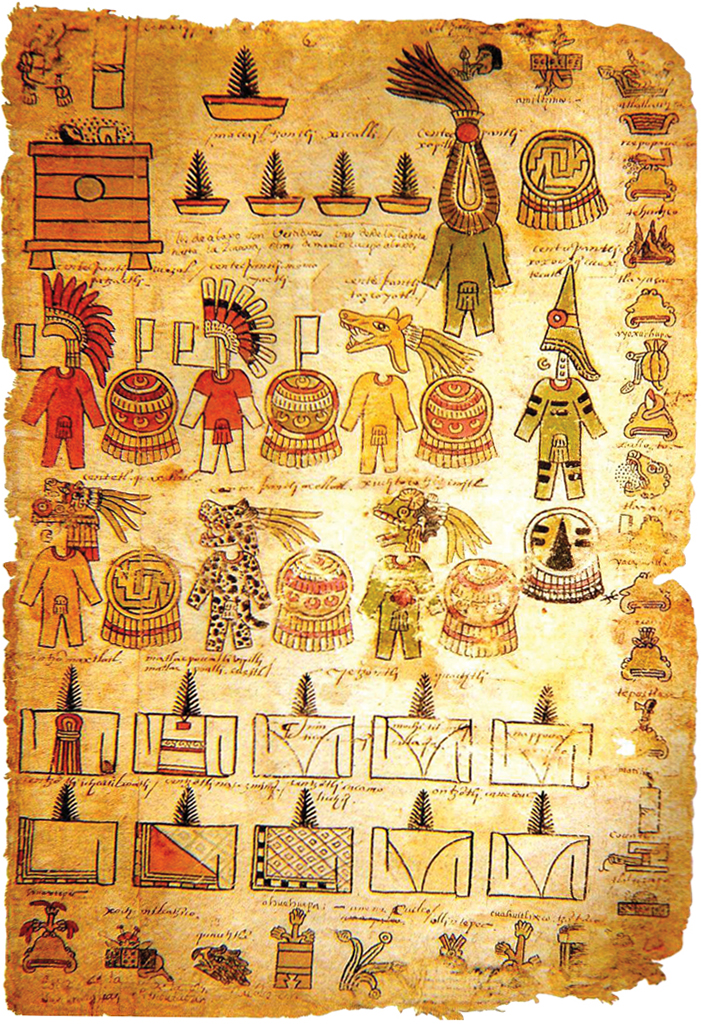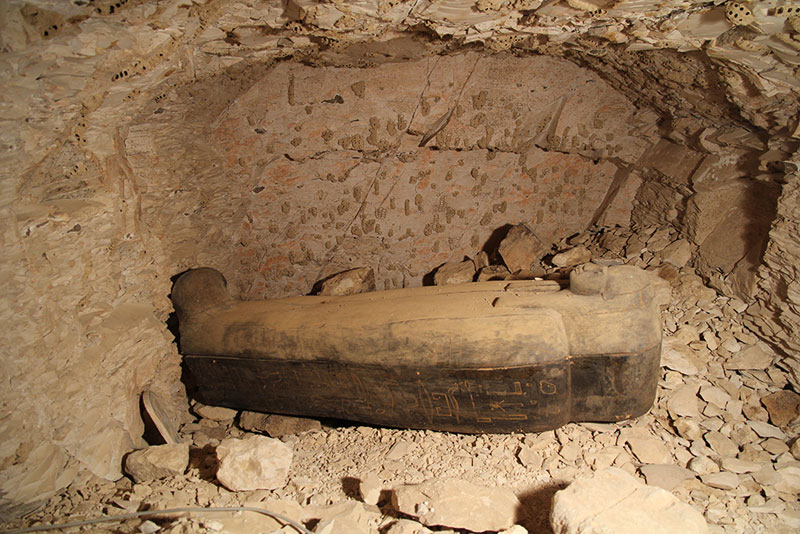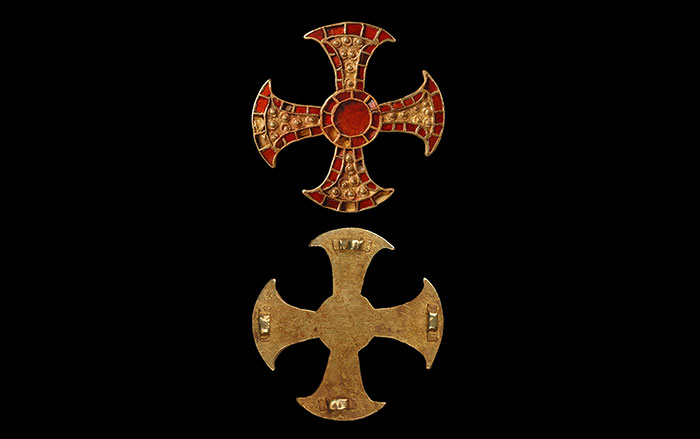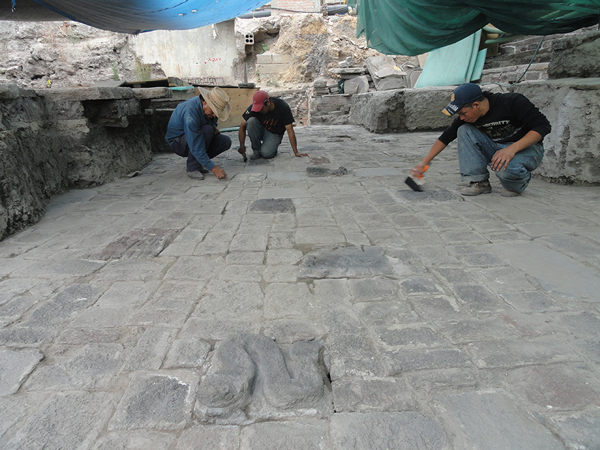
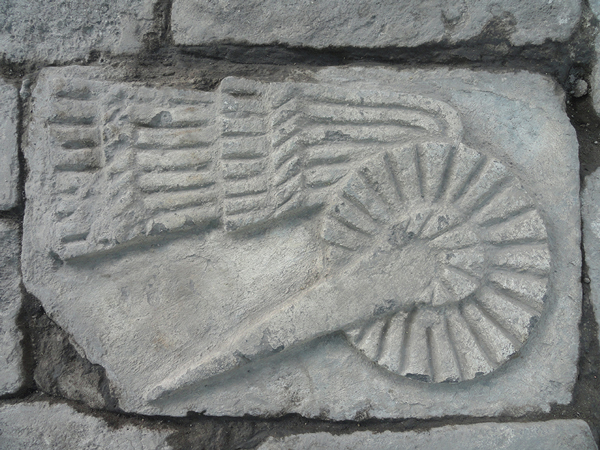
A series of stones carved with images of snakes, warriors, and headless prisoners has been found at the sacred Aztec site of Tenochtitlan in Mexico City's historic center. The 25 images, carved from gray and red volcanic rock, were embedded in the floor of the plaza in front of the Templo Mayor complex, where the Aztecs performed thousands of ritual killings before the Spanish conquistadores arrived. The stones date to between 1440 and 1469, during the reign of Moctezuma I, and describe the birth of Huitzilopochtli, the Aztec god of war and the sun. Bas-relief images of serpents with gaping mouths, a warrior carrying a shield and dart thrower, and a weeping captive on his knees with his hands bound behind his back, all tell the story of a cosmic war between the sun, moon, and stars that preceded the birth of the supreme Aztec deity and the beginning of Aztec culture. Raul Rodr"guez Barrera, who is leading the excavation for the Mexican National Institute of Anthropology and History and the Mexican National Council for Culture and the Arts, says, "It is a historic document in stone, a narrative of war, sacrifice, and death."





